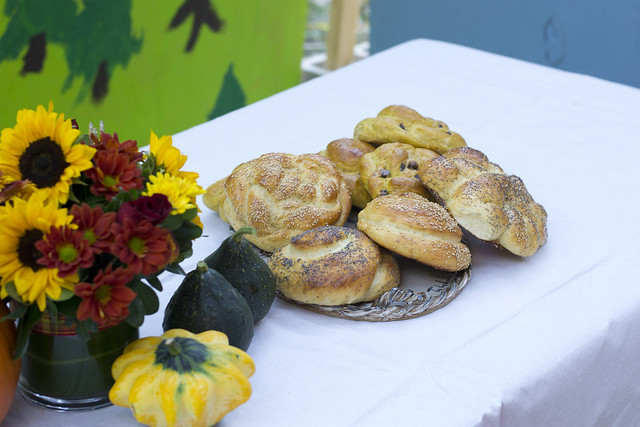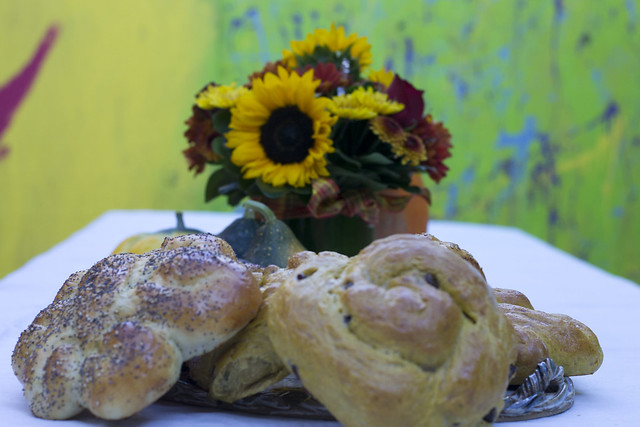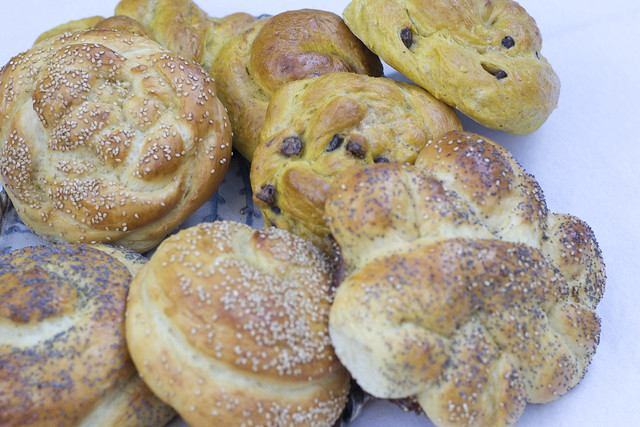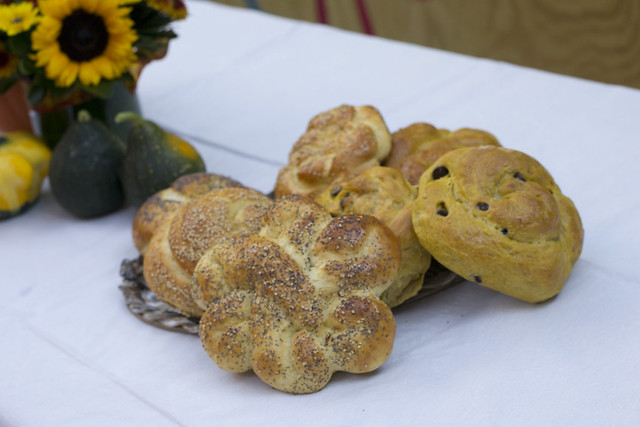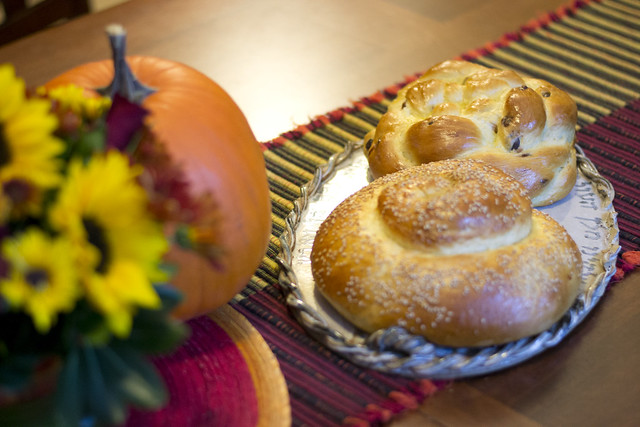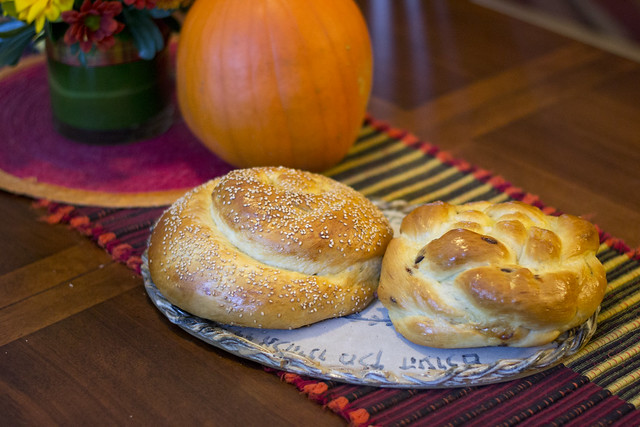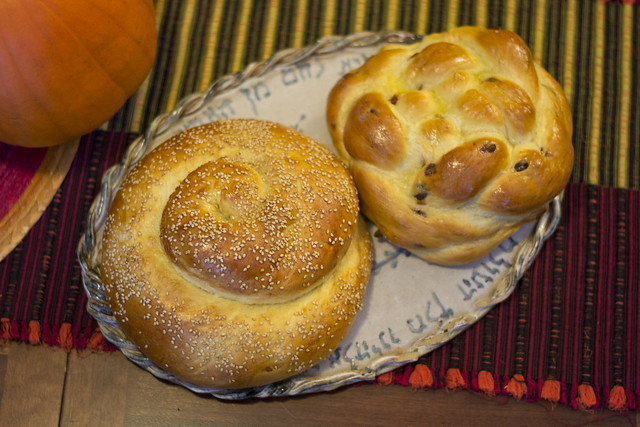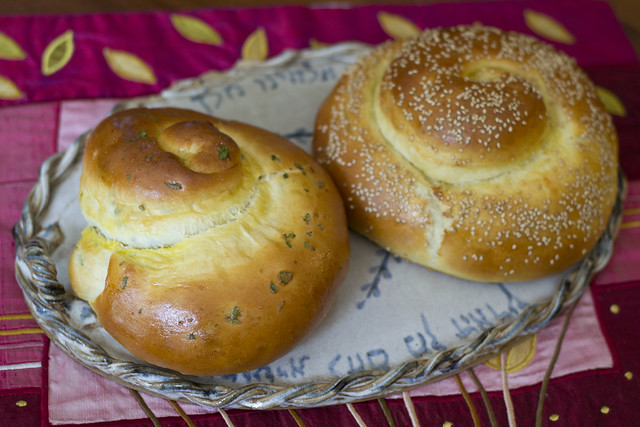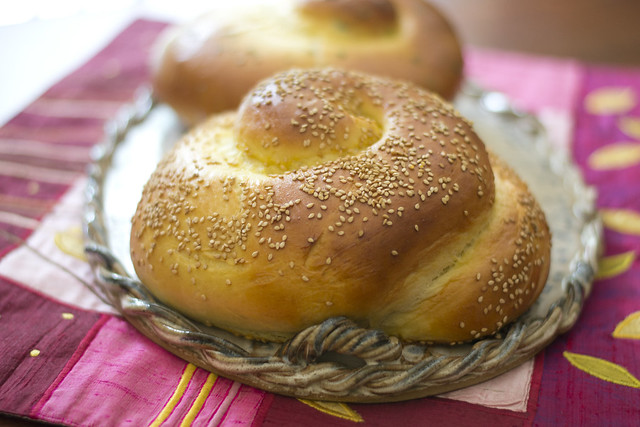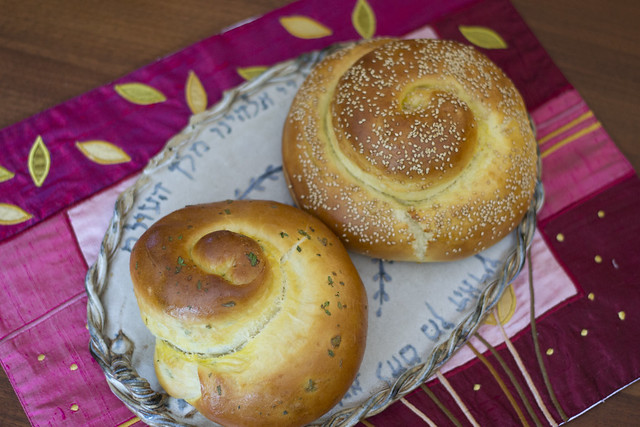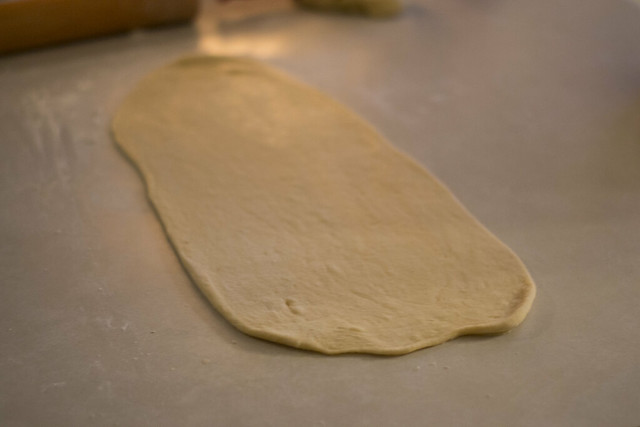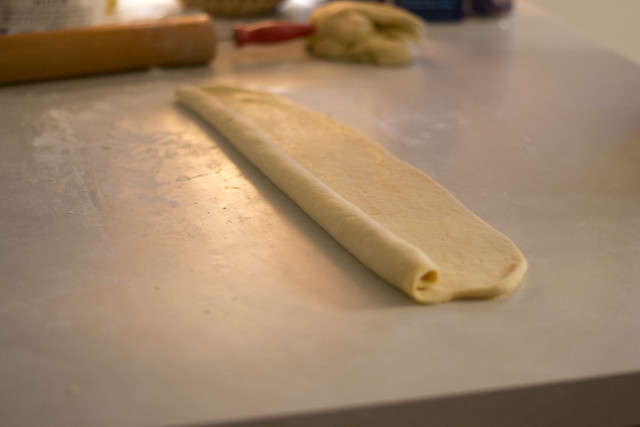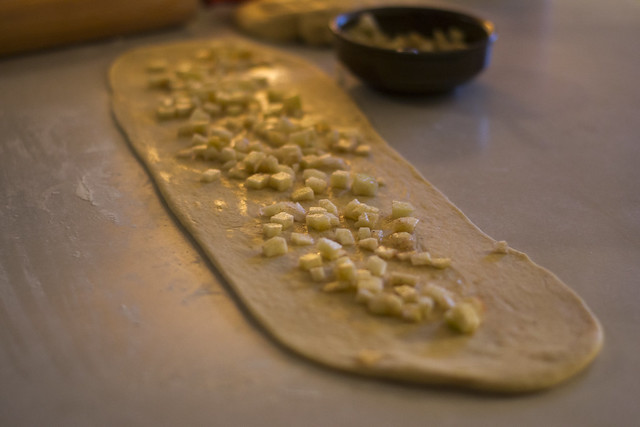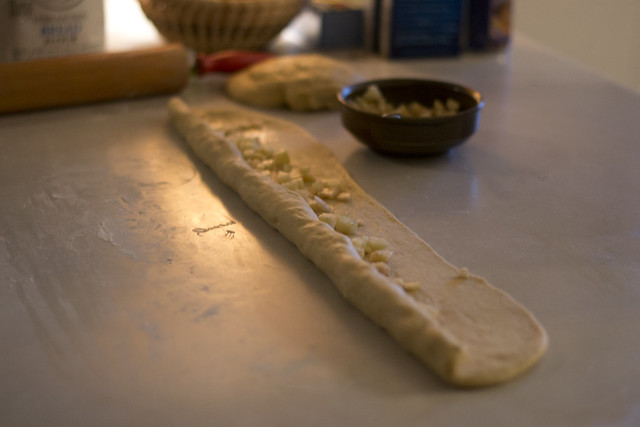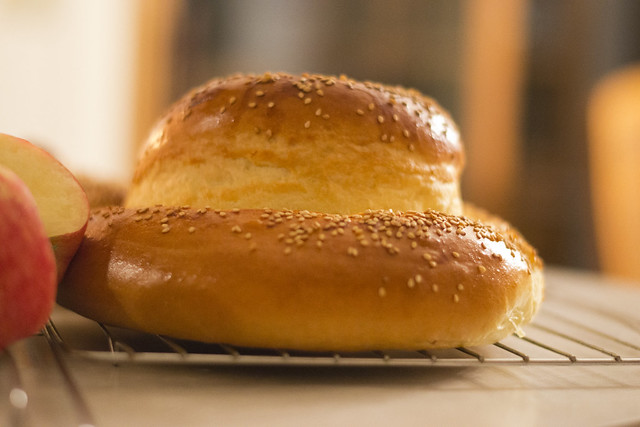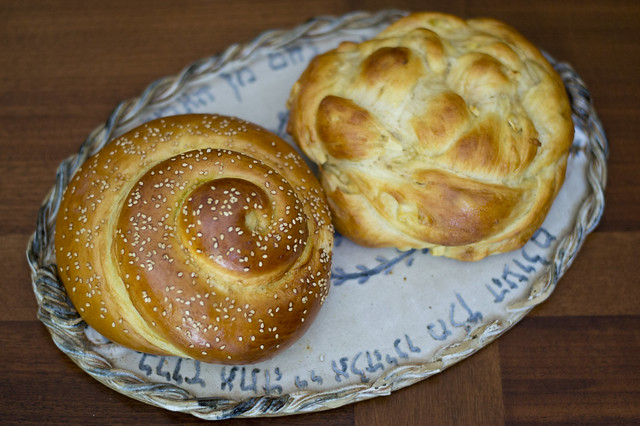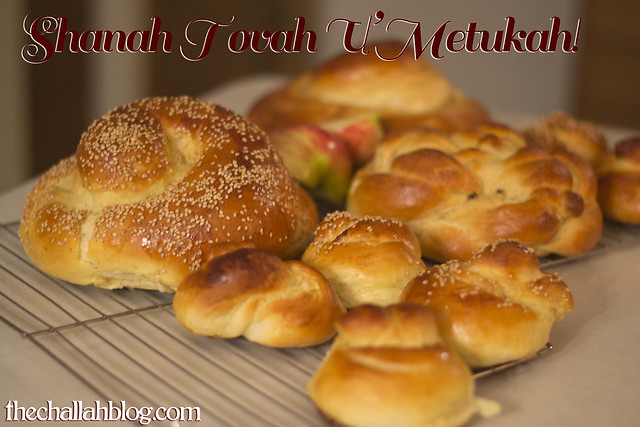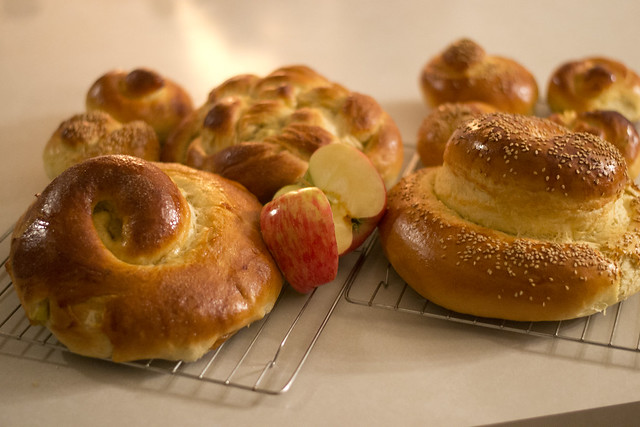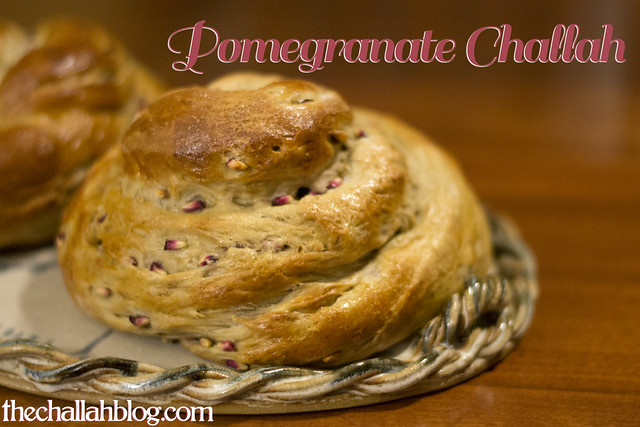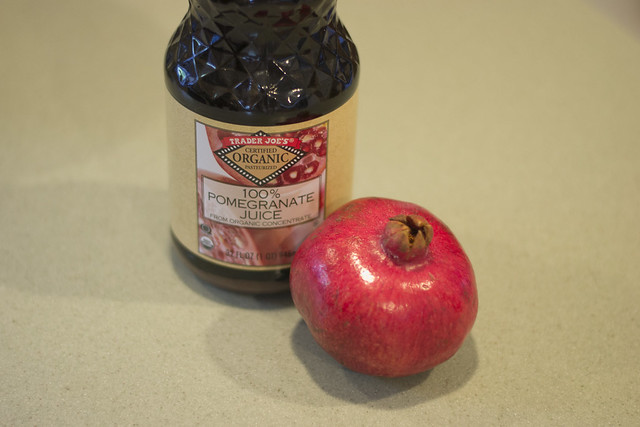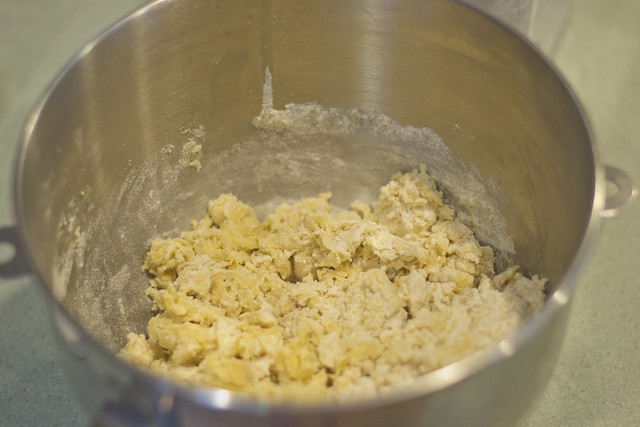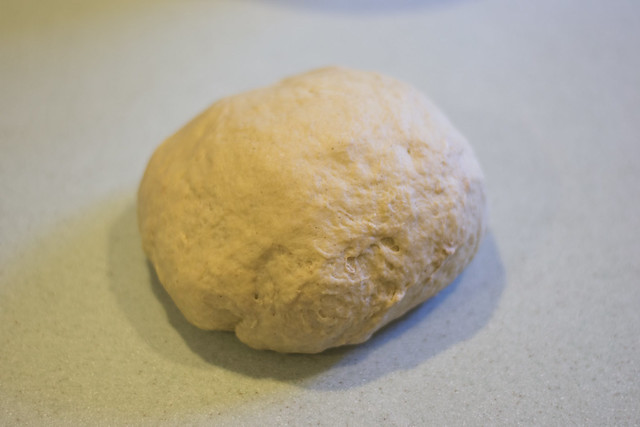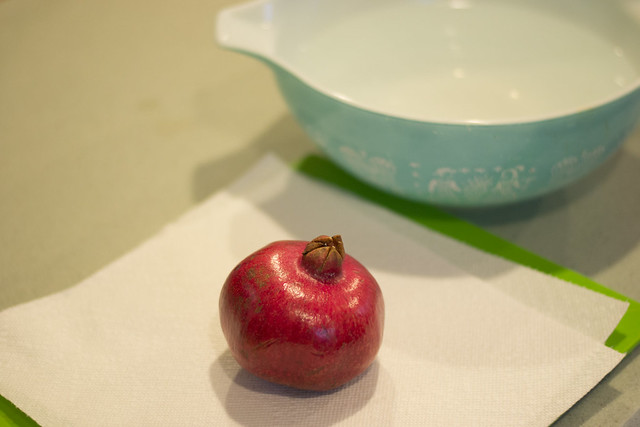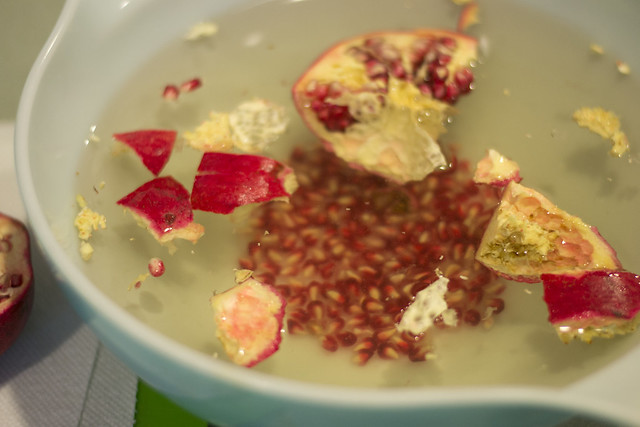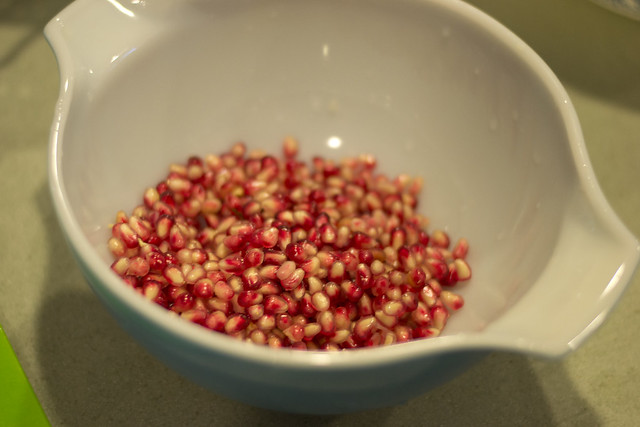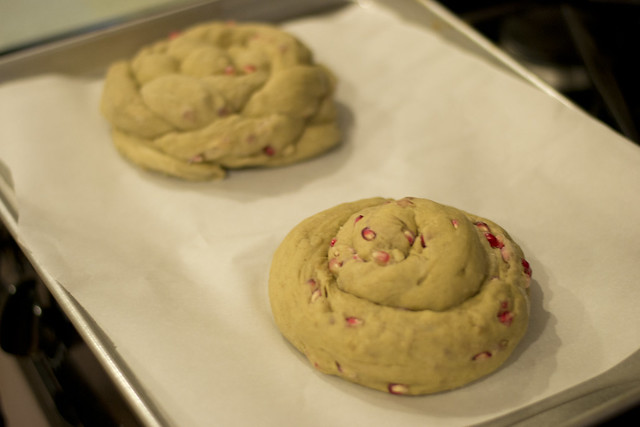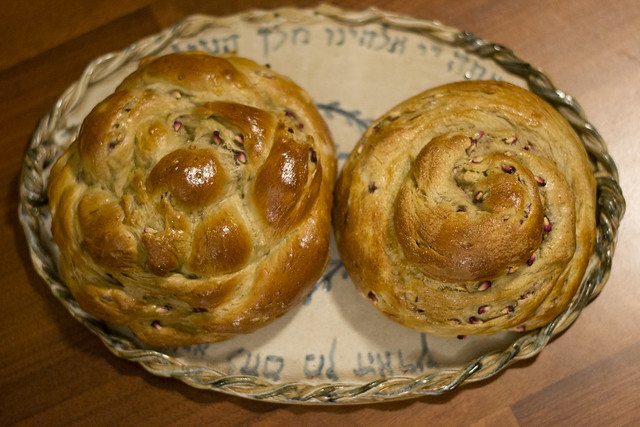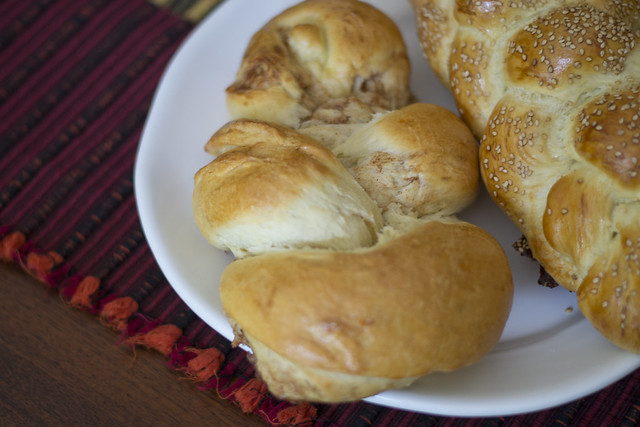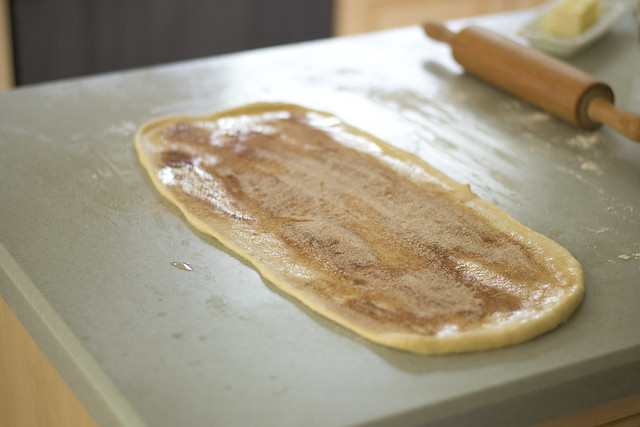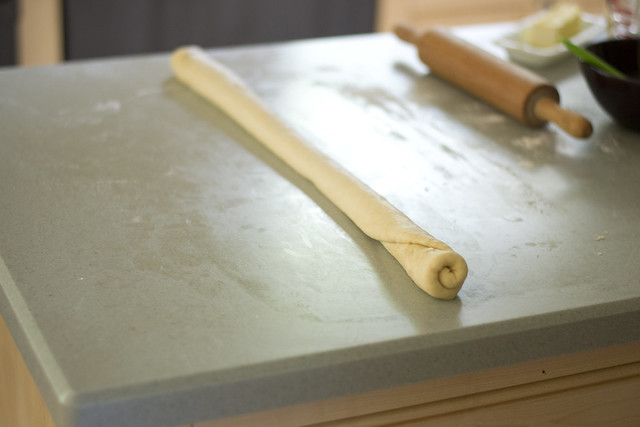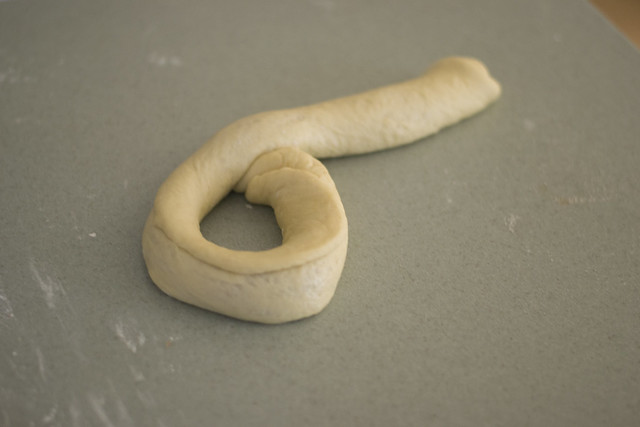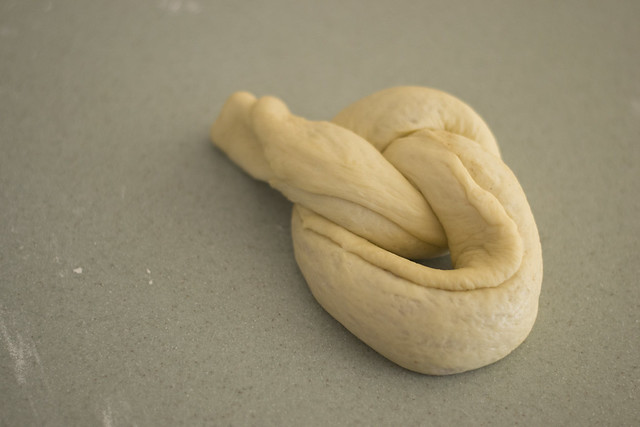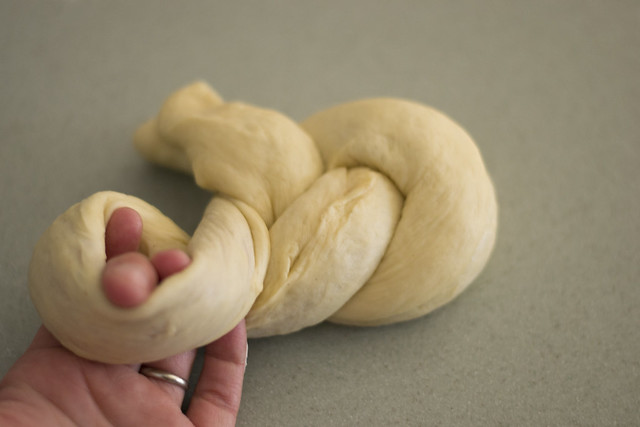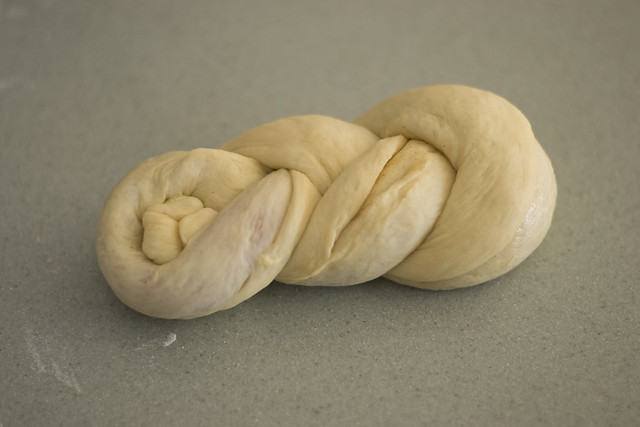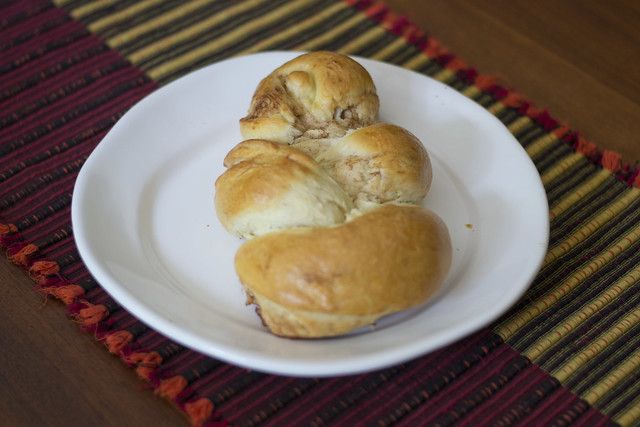As I wrote about in my post on
pomegranate-shaped challah, it's no secret that I love pomegranates. I have a pomegranate-shaped necklace, and our ketubah has a pomegranate on the scroll. There is a powerful symbolism around pomegranates and fertility, abundance, and the new year. Many people eat them on the second night of the holiday as their traditional "new fruit." Additionally, pomegranates supposedly contain 613 seeds, the same number as the mitzvot in the Torah.
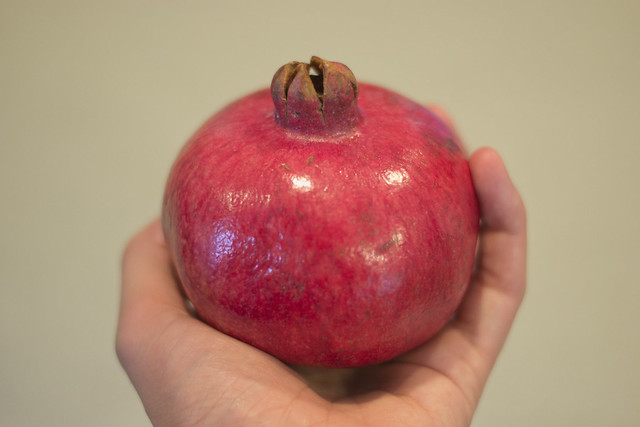
This challah turned out to be quite a challenge, but I learned a few things in the process of making it. Besides a recipe, I'm excited to share with you the amazing way of removing the seeds from a pomegranate without staining your fingers and your clothes (no kidding, I actually wore a white shirt while seeding my pomegranate... totally clean!). Pomegranate seeds--arils--are watery, sweet, and crunchy. For some reason, I sort of expected them to change consistency in baking... which they really didn't. I had an idea that they'd become like cranberry texture. They don't. But don't let that deter you. This bread is delicious and the additions of extra aromatic spices and pomegranate juice are a fun twist.
1/2 c water
2 1/4 tsp (1 packet) active dry or instant yeast
1 tbsp honey
3 tbsp sugar or more for a sweeter challah
2 egg plus 1 more for egg wash
1/4 c neutral oil such as canola or vegetable
3 1/2 c bread flour
1 tsp salt
scant 1 tsp cinnamon
pinch ground cloves (just a pinch)
3-5 tbsp pomegranate juice (I used Trader Joe's organic)
Arils (seeds) of 1 pomegranate
Yield: 2 nice-sized round challot. You can either coil or make a braided round.
Please note, adding juice to challah may change the brakha said of this bread depending on the customs of your community. Check with your rabbinic authority for clarification on the laws of challah.
Place very warm but not boiling
water in mixing bowl. Add
yeast and
honey, mixing lightly. Allow to sit for about 10 minutes, or until the yeast is foamy. Add
eggs and
vegetable oil and mix with wood spoon. Add the
flour, salt, cinnamon, and
pinch ground cloves. At this point, your dough should be on the shaggy side because it's lacking in liquid. Don't worry too much about this.
If you have a stand mixer, beat dough hook or knead by hand. Add the
pomegranate juice slowly (I poured it into a glass) until a ball forms and holds together, cleaning the sides of the mixing bowl. This dough has a lovely dark color due to the addition of the juice. If the dough is very sticky, add more flour.
Turn the ball out onto a floured work surface and knead a few times until very smooth. Place in oiled bowl and cover in plastic wrap or a towel. Now you can prepare your
pomegranate! Place a piece of paper towel over your cutting board and cut open the pomegranate (the paper towel keeps those staining juices from trickling down onto you and your clothes). Take half of the fruit and place it a bowl of water, using your hands to break out the seeds underwater. The heavy seeds will sink to the bottom, while the membrane and skins will float. Amazing right? No mess!
When you're done, you can skim off the membrane and skin and then pour the contents of the bowl through a strainer. Ta-da!
Allow to rise at least one hour, preferably more (usually about an hour and a half), until doubled in size. With some extra flour ready, knead the pomegranate seeds into the dough by hand and shape as desired. I ended up adding about 1/4 c of additional flour.
Allow to shaped loaves to rise an additional 20-30 minutes. Top with an egg wash and sprinkle with sugar if desired.
Bake at 350 for 25-30 minutes. Since round challot tend to be doughy in the middle, check at 20 and 25 minutes, foiling the top as necessary to prevent over browning. The challot are ready when internal temperature reaches 180 degrees.
As I said, these challot are different. The seeds are a little juicy and a little gummy. They pop in your mouth and have a lovely tang. The spices of the bread are aromatic which I think is one of my favorite parts along with the pomegranate juice. This particular pomegranate also didn't seem quite as ripe (the seeds weren't all bright red like you sometimes get). However, I'm calling this a success. The Hazz and I enjoyed one loaf, and we're freezing the other to serve in a few weeks. I can't believe it's already the middle of Elul!
This High Holiday season,
Nirbeh zchuyoteinu k'rimon, may our merits increase like the seeds of a pomegranate.
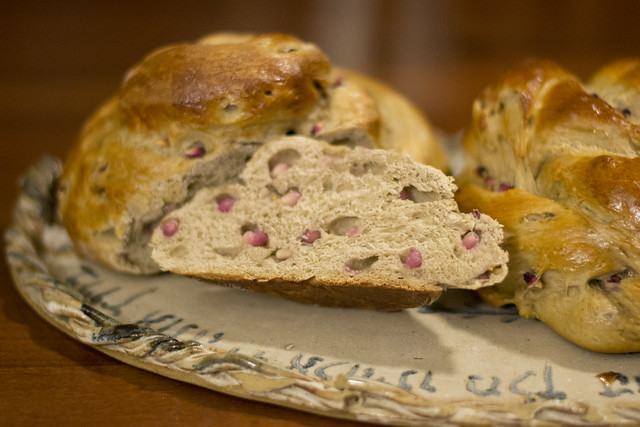
Rosh Hashanah Blogger Party & Giveaway
Welcome to the first ever Jewish Holiday Blog Party, hosted by Jessie of Taste and Miriam of Overtime Cook, and sponsored by Kitchen Aid! As you may know, Rosh Hashanah, the Jewish New Year is coming up, and Jewish bloggers from all over the world are celebrating with all kinds of twists on traditional Rosh Hashanah foods.
To kick off the celebration,
Levana Kirschenbaum is giving away a copy of her fabulous new book,
The Whole Foods Kosher Kitchen to
three lucky winners.
To enter, leave a comment on this post sharing with me your favorite part about Rosh Hashanah (it can be food, services, family, whatever you like!). Limit one entry per reader
per blog so click over to the other participating blogs below for your chance at additional entries! Giveaway ends 5 am eastern time on September 11th, 2012.
Prize is sponsored by Levana and available to readers from all blogs participating in the Rosh Hashanah Blog Party. Prize can only be shipped within the US.
This is the first of hopefully many exciting Holiday Blog Parties, so if you would like to join in the fun, please email
holidayblogparties@gmail.com.
Stop by and check out some of these amazing Rosh Hashanah themed recipes on the following blogs:
Challah and Bread:
Sides, Salads and Starters:
Main Dishes:
Desserts and Drinks:
